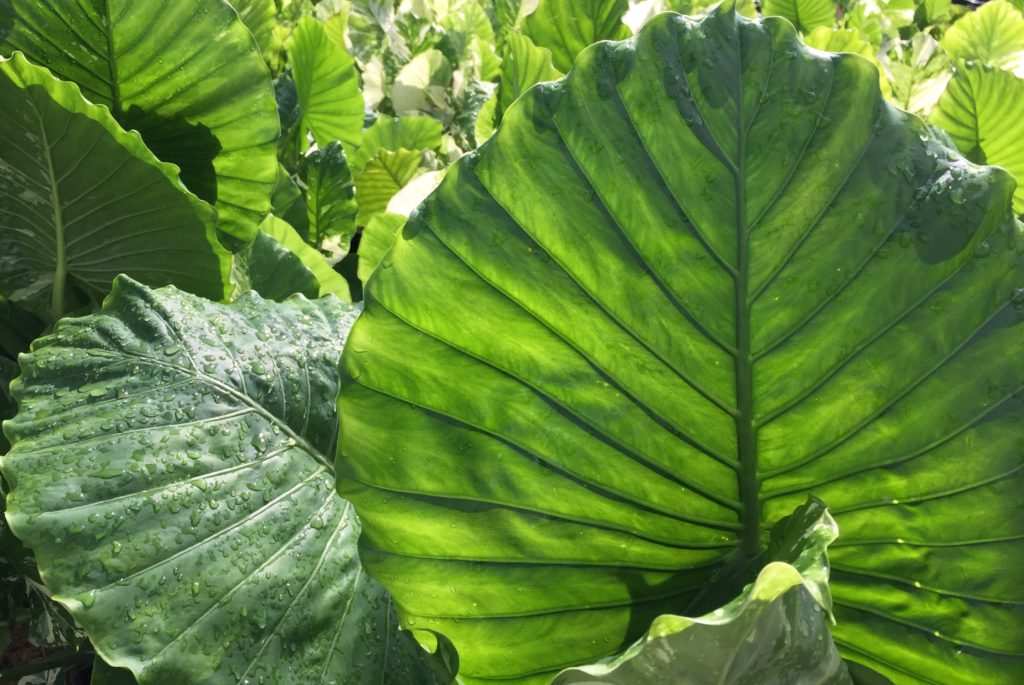
A posh backdrop for a shaded tropical landscape, the Alocasia offers large heart-shaped leaves that add a striking element to the garden. Allow plenty of room for this plant to grow since some varieties have long stems that like to arch. Alocasias are perfect for large areas under trees or nestled among larger plants in the background of the garden. Plant away from walkways since it might interfere with traffic when the plant reaches its mature size. Alocasias are excellent container plants and add a gorgeous touch to a patio or a shaded lanai. Strategically arrange alocasias with other houseplants to create an indoor jungle of your very own. Pair them with philodendrons and pothos since they have similar care needs to create a low maintenance green space in the home.
Alocasias enjoy dappled sunlight as well as partly shaded areas. Since it is native to the tropics, it also likes a fair amount of moisture, fertile soil, and warm temperatures. Enjoying the look of the alocasia in colder climates is easy, just plant them in containers and bring them into the home for overwintering. When overwintering, try duplicating the ideal growing conditions inside the home. Fertilize this plant three times a year, once in the spring, summer and fall.
Some of our favorites: Alocasia ‘Low Rider,’ Alocasia ‘Black Stem,’ Alocasia ‘California,’ Alocasia ‘Imperial,’ Alocasia ‘Borneo Giant,’ Alocasia ‘Portora,’ Alocasia ‘Regal Sheild,’ Alocasia ‘Stingray’, and Alocasia Variegated ‘Dawn’ (U.S. Patent Pending No. 17323485)
Note: These plants are grown for decorative purposes and are not intended for human or animal consumption
FAST FACTS
Outstanding Features: Fabulous heart-shaped leaves

Common Name
Alocasia, Elephant Ear

Bloom Colors
White/green spathes

Water
Moderately and consistently moist

Zone
10 and above

Fertilizer
Well-balanced fertilizer throughout the growing season

Scientific Name
Alocasia spp.

Light
Part sun, morning sunlight only

Size
Varies depending on the variety

Overwintering
In zones 9 and lower, use as a container plant or as an annual in the landscape

Companion Plants
Red Button Ginger, Variegated Ginger, Bromeliad